

Get 4 FREE video lessons sent to your inbox!
GETTING STARTED
ON THE PIANO
Success! Check your email!
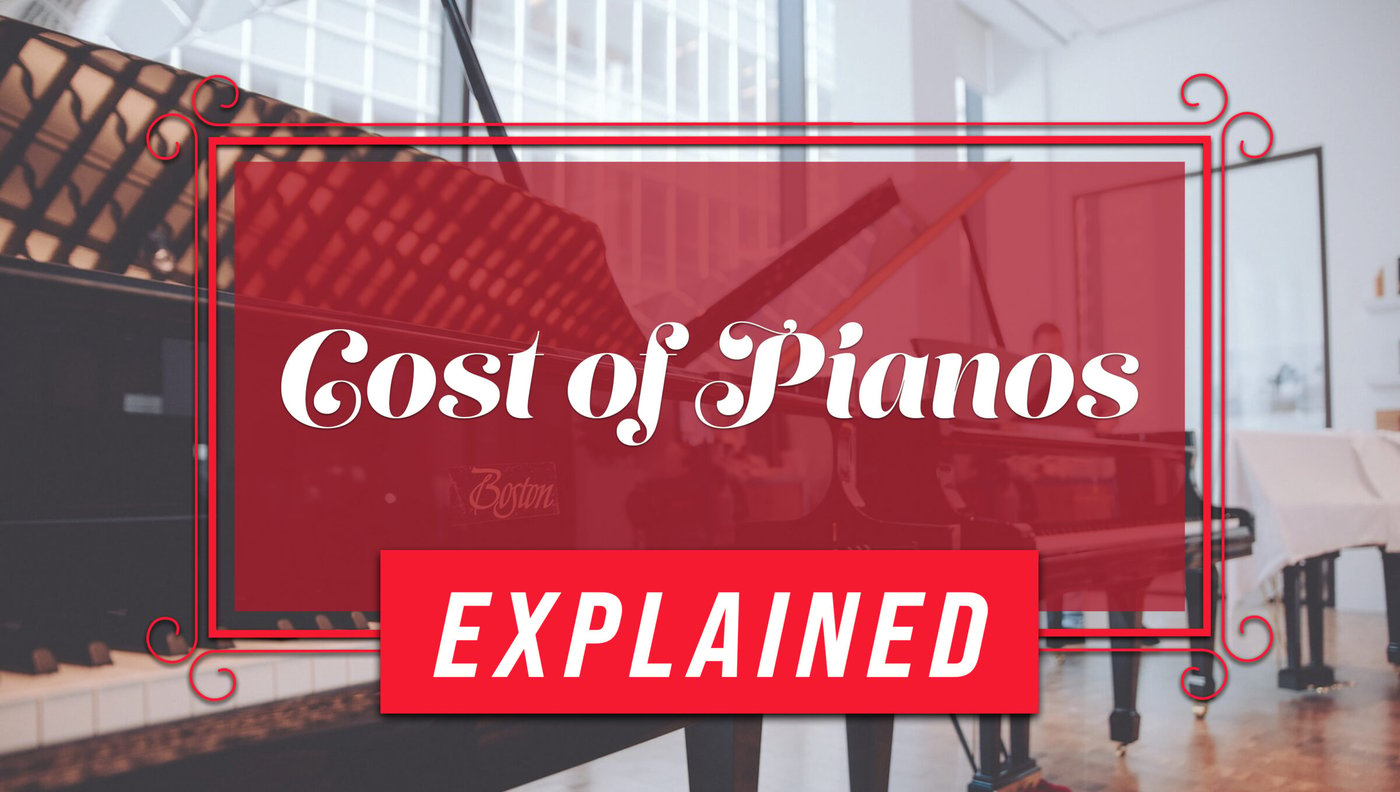
Congratulations, you’ve decided to learn how to play the piano! It’s going to be a rewarding journey, but one of the first things you’ll need to do is also one of the hardest: buying a piano. If you’re confused about the cost of a piano, you’ve come to the right place!
In this post, we’ll explore the cost of acoustic and digital pianos.
Acoustic Pianos
Subscribe to The Note for exclusive interviews, fascinating articles, and inspiring lessons delivered straight to your inbox. Unsubscribe at any time.
*This article contains affiliate links, which means we might earn a small commission from the product seller if you make a purchase. For more info, check out our privacy page.
Piano costs can vary widely. Acoustic pianos are almost always going to be more expensive than digital ones, but they are not necessarily a better choice.
You may have also found free acoustic uprights on places like Facebook Marketplace, but the quality of these pianos is debatable. They’re often very old, from unrecognizable brands, and poorly maintained. If you’re serious about learning how to play piano, you’re probably better off buying a new entry-level digital piano.
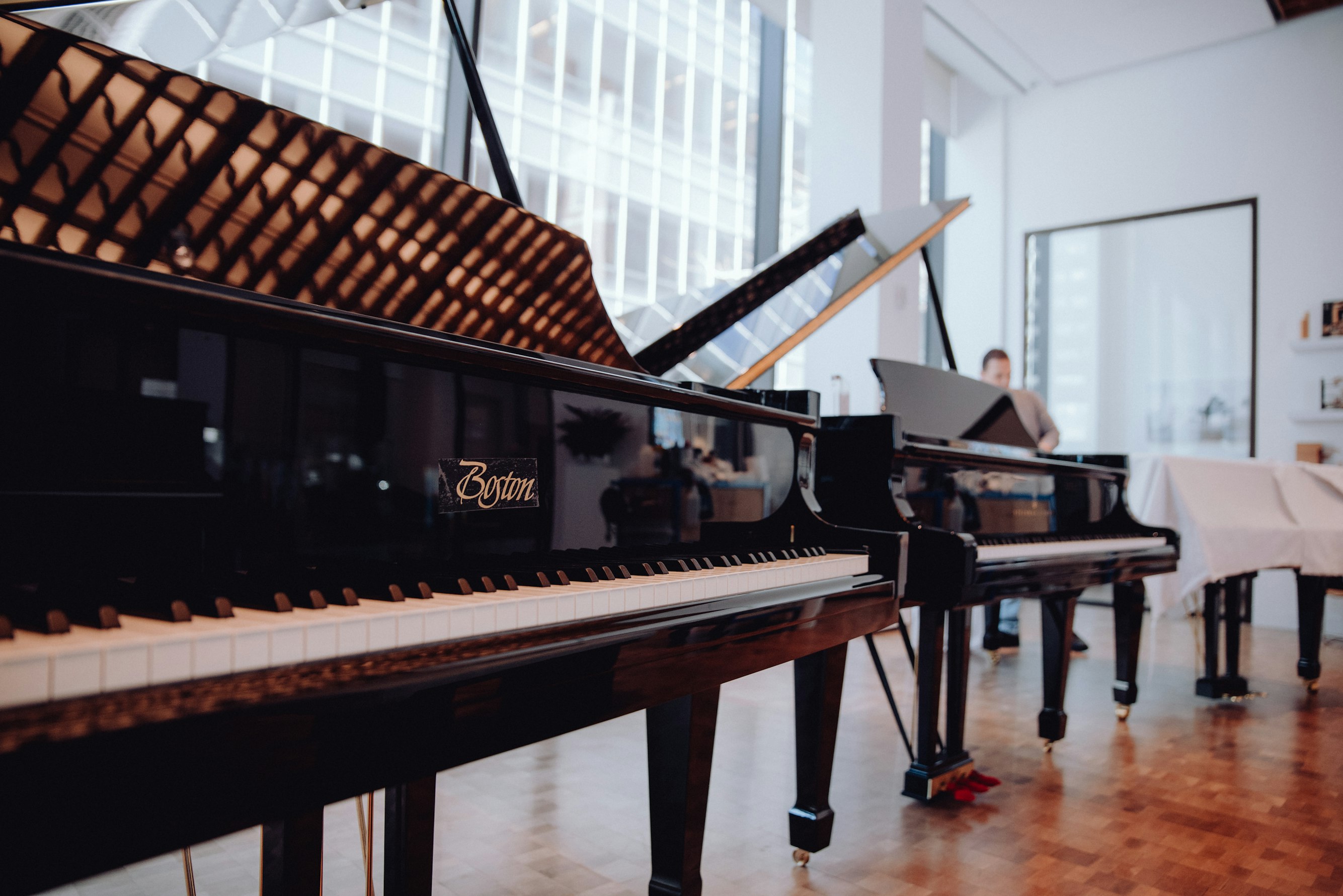
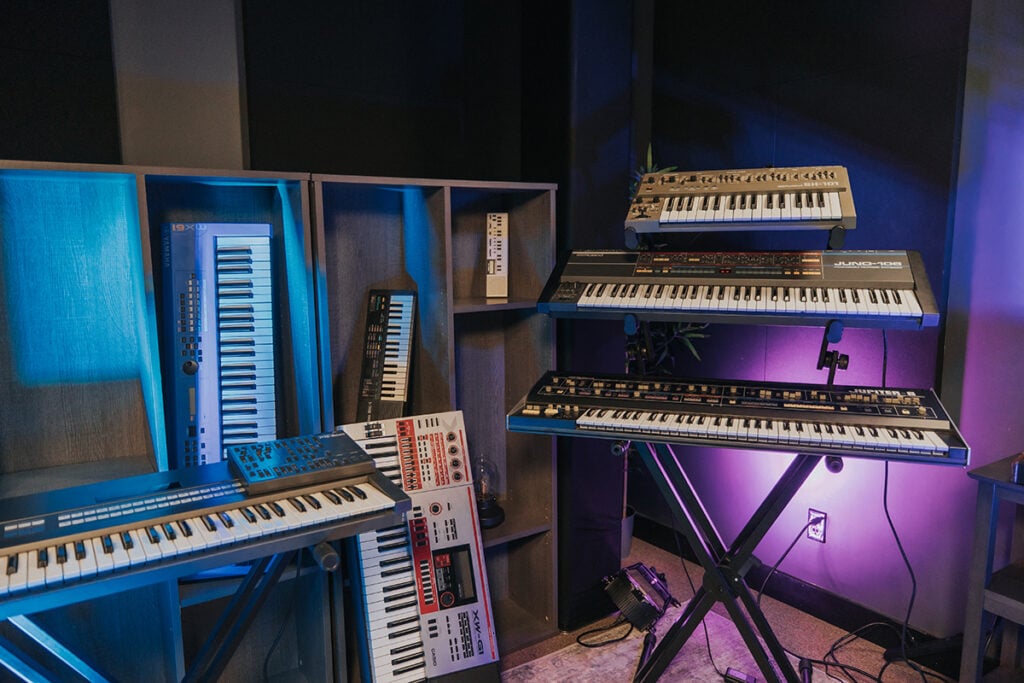
You may want to check out local stores that sell used acoustic pianos. These are likely to be from more recognizable brands and have been vetted by an expert.
We have more tips on what to look for when shopping for a first piano in our buying guide. The most important tip? Play a variety of pianos before you buy anything! Pianos are a very personal choice and at the end of the day, all that matters is how a piano feels under your fingers!
Piano prices can be opaque, especially acoustic piano prices. An excellent resource you should check out is the “Piano Buyer” online consumer guide, which lists MSRPs (minimum suggested retail prices).
Digital piano prices are much easier to find—just look up online retailers like Sweetwater, Reverb, or even Amazon.
Please note that this article is intended to give you an idea of what each “class” of instruments costs and is not a definitive guide. Any specific prices that are listed are only accurate at the time of this post’s publication. I have linked to the source of the price where available.
No matter the tech innovations of the digital world, acoustic instruments will always hold a certain charm.
The following is a list of price ranges of different “classes” of acoustic pianos. These categories are rather arbitrary because there is no universal standard of what constitutes an “entry-level” or “professional” piano.
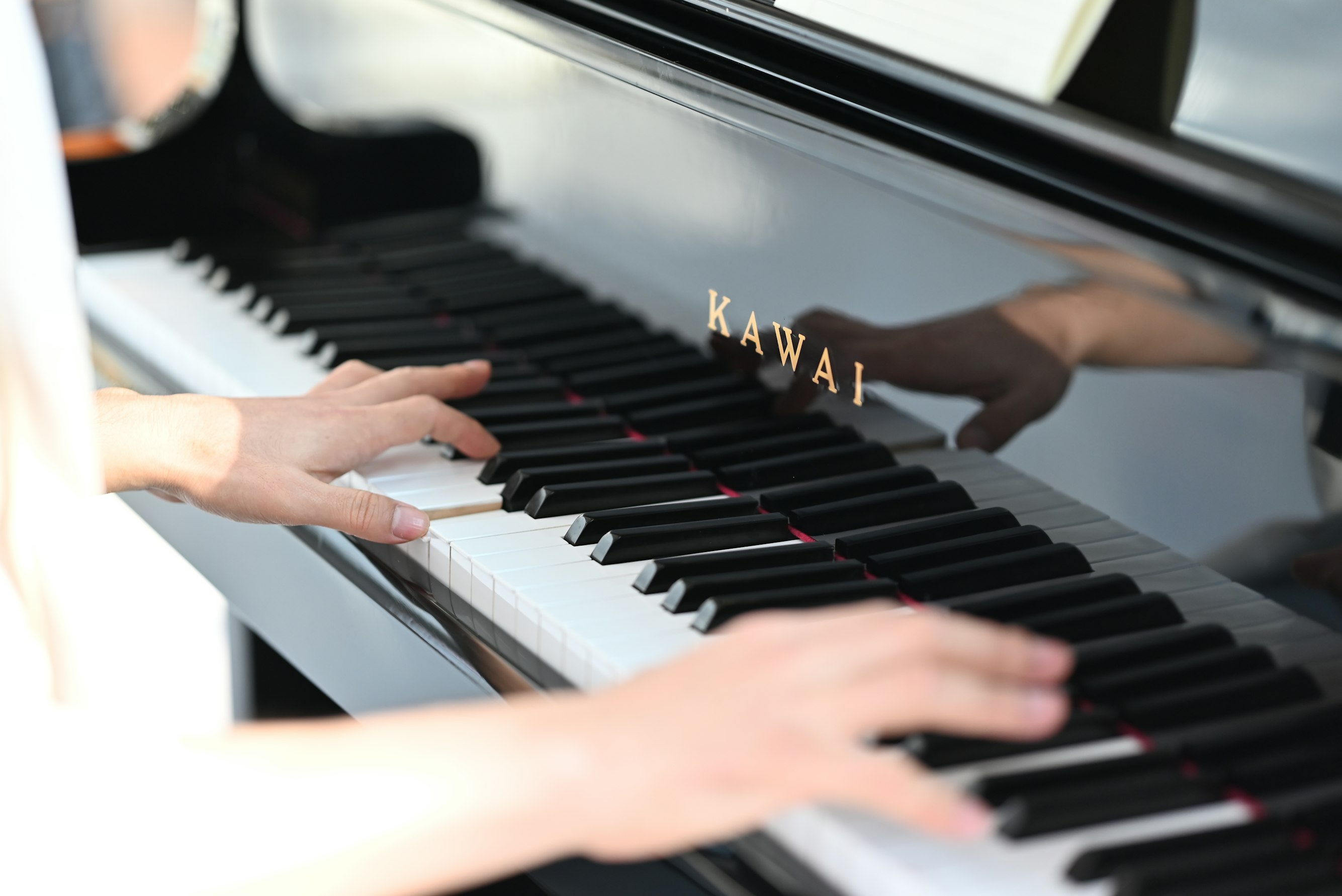
Even within the same “class,” acoustic piano prices can range widely. Factors that affect acoustic piano cost include:
European brands tend to be a lot more expensive. But Yamaha and Kawai (two Japanese powerhouses) remain extremely popular and respected. It really comes down to taste: some people prefer the warmer tone of a European Bechstein, others the brighter, sharper sound of a Yamaha.
Price range: $5,000 – $15,000
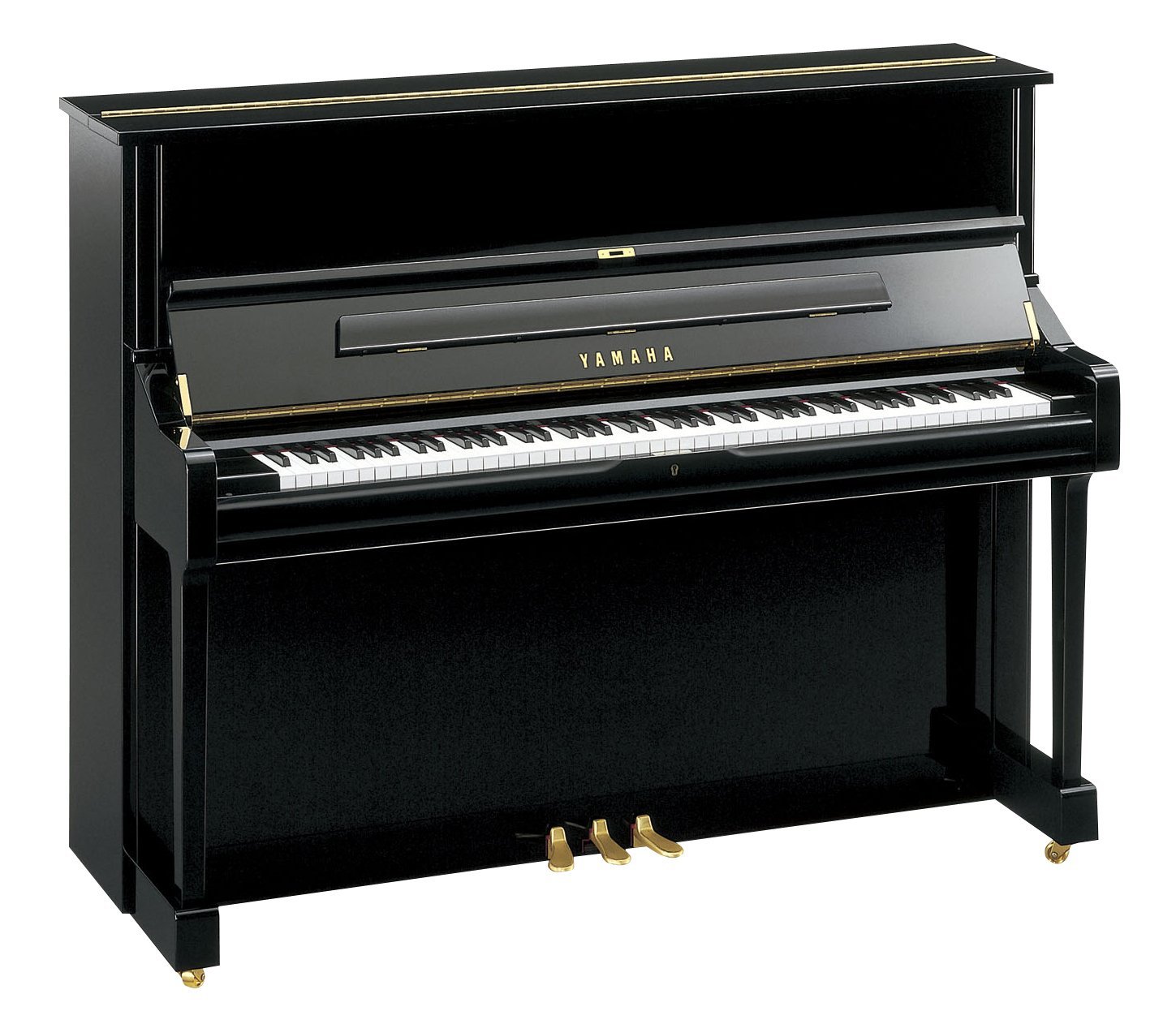
Uprights in this category tend to be smaller, with shorter strings and smaller soundboards as a result. This generally means poorer sound quality, but smaller instruments are also quieter.
These instruments are geared towards students and may include (or are compatible with) silent practicing features. Which is an advantage for parents and housemates!
Examples of entry-level acoustic uprights:
Price range: $10,000-$35,000
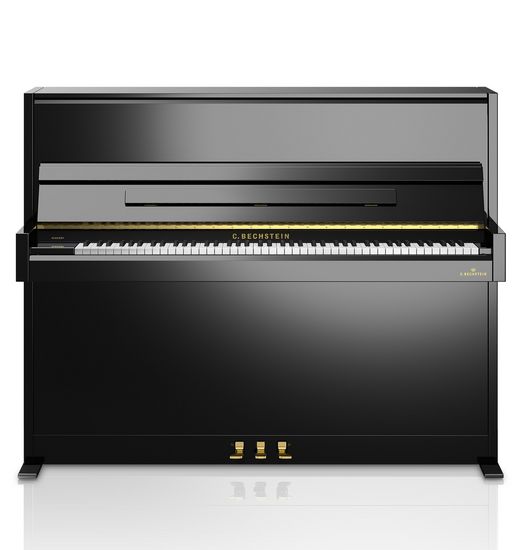
If you’ve been playing for a few years, or you foresee yourself playing long-term, you may want to invest in an instrument slightly more superior than the cheapest ones available.
Most piano makers offer a wide range of upright sizes. For example, Kawai’s K-series of uprights range from 45” to 53”. Again: larger pianos = longer strings, larger soundboards = better sound quality.
Price among uprights varies a lot. For example, the Concert and Residence line of C. Bechstein’s uprights can cost more than $35,000. Other examples of mid-size acoustic uprights:
Price range: $15,000 – $90,000
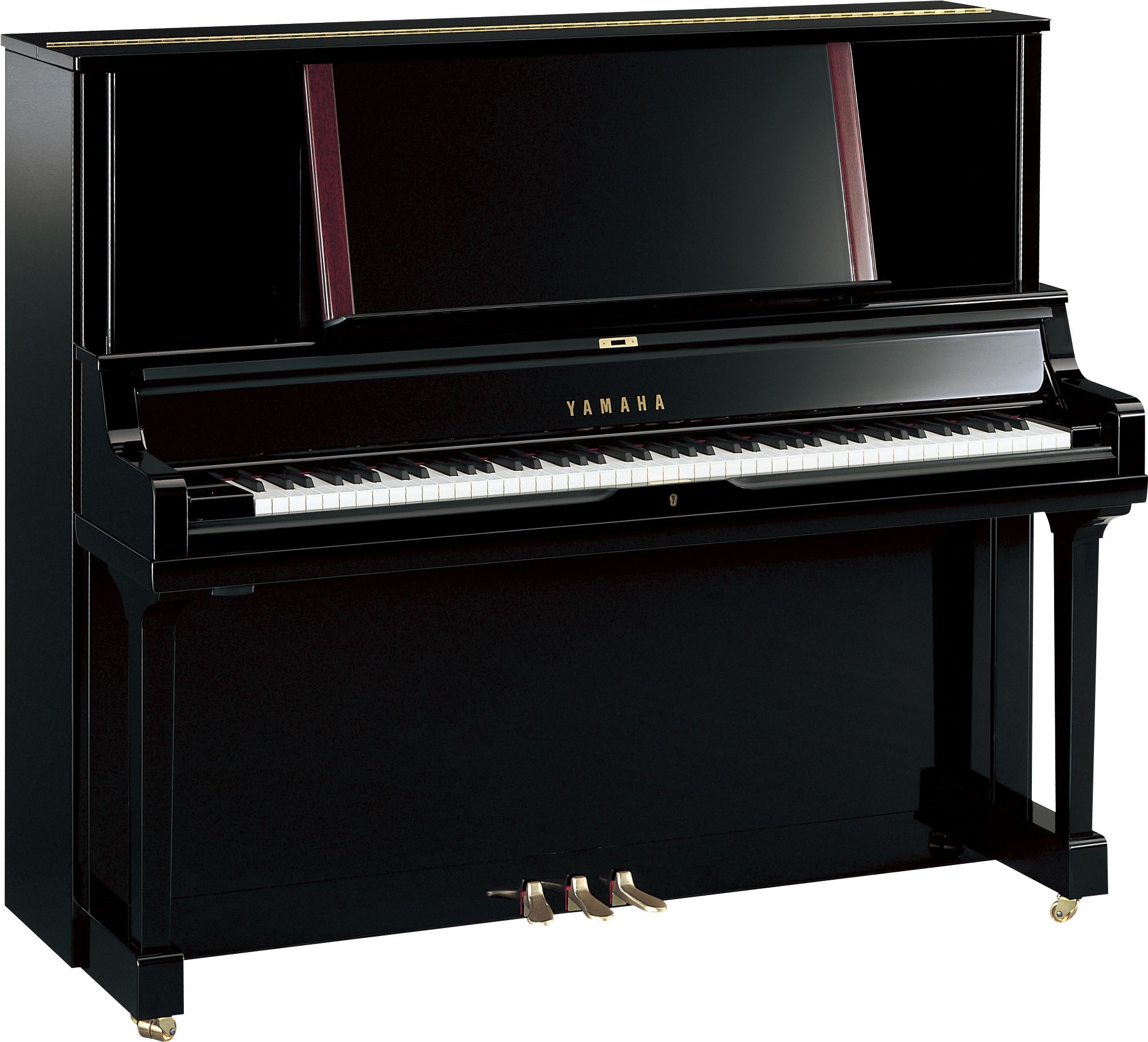
These uprights are aimed at advanced piano players who don’t have the space and/or the funds for a grand piano. They can be very high quality instruments. Some boast longer strings and larger soundboards than baby grands, making them superior to baby grands in some respects. Some brands call these instruments “vertical grands.”
Examples of “vertical grands”:
Price range: $15,000 – $150,000
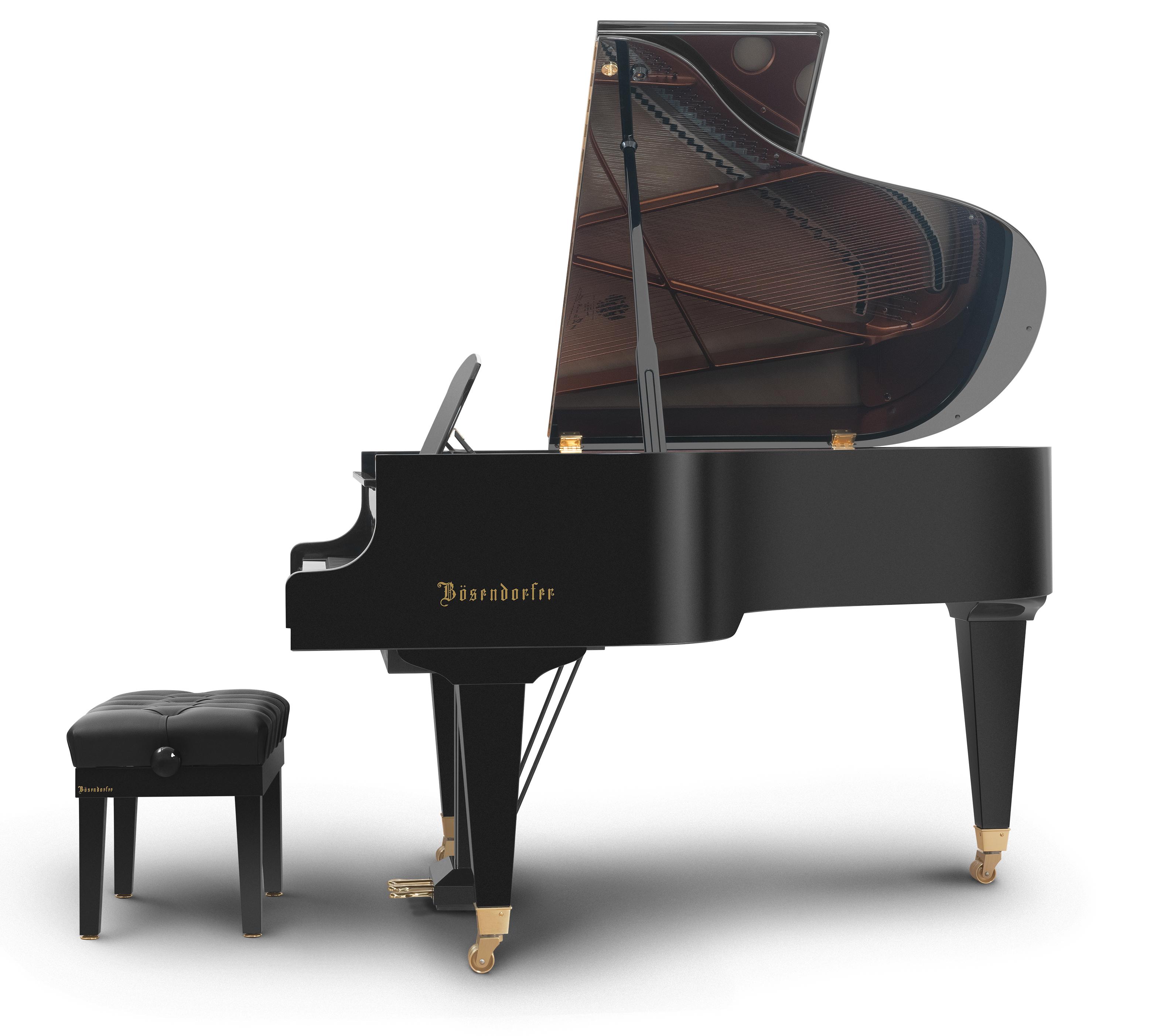
Nothing beats the experience of playing on a grand piano’s action. Upright pianos have a fundamentally different mechanism and the use of gravity to bring hammers back down to rest means grand pianos generally allow faster repetition. Nevertheless, as I’ve mentioned before, some upright pianos may have superior components to baby grands.
I found that baby grands had the most price variability than any category. Most piano brands will offer a baby grand model, which means you can get a very inexpensive baby grand like the Essex EGP-155C (MSRP: $15,900) on one end, and the Bösendorfer 170VC (MSRP: $149,999) on the other.
Again: play the piano before you buy it and make sure you ask your salesperson exactly what makes a baby grand piano more desirable than the next best upright. Pianos can be very unique individuals!
Today, many digital pianos offer a playing experience that rivals acoustics—all for a fraction of the price. Digital instruments also let you play with headphones (so you don’t wake up your roommates!), connect your instrument to your computer as a MIDI controller, and experiment with different sounds and layers.
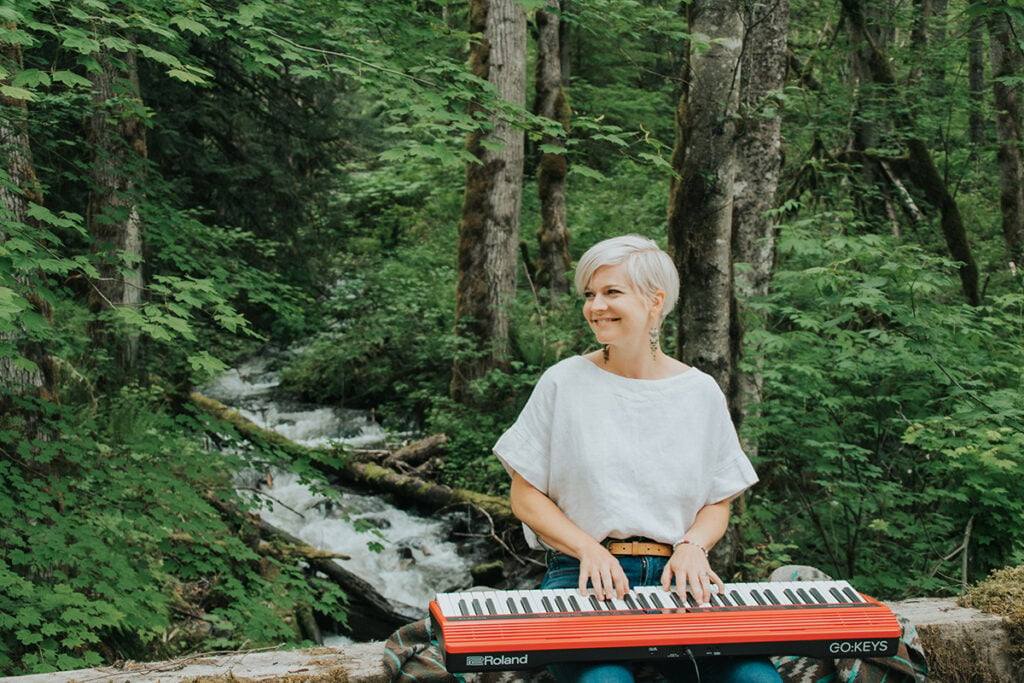
Like acoustic pianos, digital piano makers make instruments for a variety of customers, from beginners to professional musicians who need a powerful, portable solution to touring. If you’re serious about learning piano, you should look for the following key features:
In my opinion, action (how a keyboard feels when played) is more important than sound quality because you can always download a more preferable VST.
Price range: <$500

These pianos are perfect for on-the-go playing. They may not have weighted keys or the most features, but they are light, compact, and easy to bring on the plane or train. They may also serve well as a first instrument for very casual learners and children.
Examples of compact digital pianos:
Price range: $500-$1,000

These pianos are excellent choices for beginners just sussing out piano as a hobby. They won’t break the bank, offer essential features and, most importantly, have weighted keys, which are a must-have for properly developing technique.
Examples of full-size entry-level digital pianos:
Price range: $1,500-$3,000
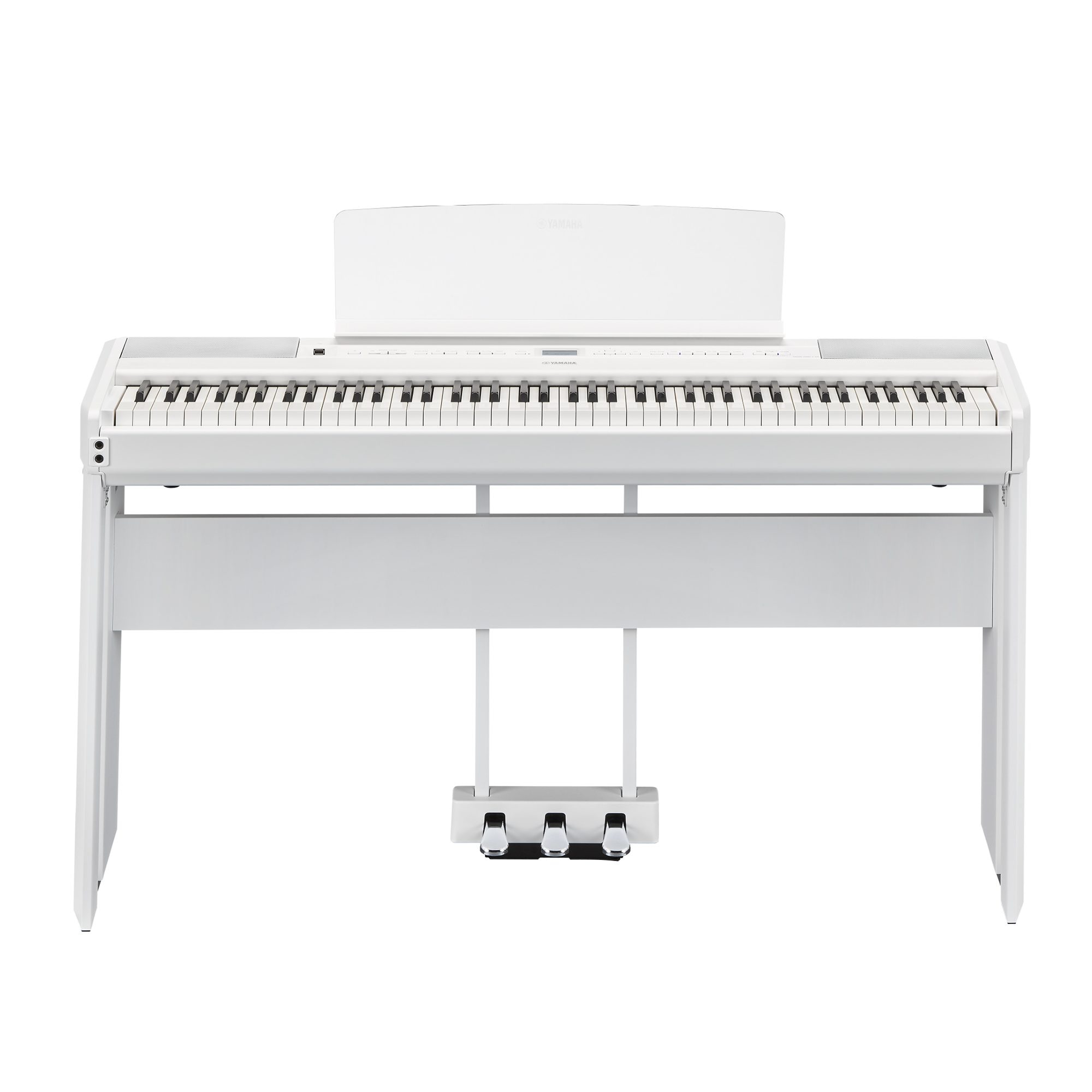
This category of digital pianos have a higher price point and are ideal for more serious piano players who want an authentic playing experience in a portable package. These pianos will have top-tier sound quality and action authenticity. They’re not cheap, but they are nevertheless much more affordable than an entry-level upright acoustic.
Examples of professional portables:
Price range: $2,500 – $6,000

These pianos are built especially for touring and gigging stage musicians. They will have a lot more functionality and may even act as synthesizers. But many will lack built-in speakers.
Pianos in this category will also have a superior sound quality and key action authenticity. However, their myriad of features may not be necessary for advanced piano players who chiefly use basic sounds, such as classical and jazz players. The extra features that command the higher price point are aimed at stage musicians who need looping, synth pads, presets, and other production tools to accompany a performing band.
Examples of stage pianos:
| Acoustic Piano | Price Range | Models |
|---|---|---|
| Entry-Level Uprights | $5,000 – $15,000 | Kawai K-15 (MSRP: $5,995), Zimmermann S2 (MSRP: $8,590), Boston UP-120S (MSRP: $9,800), Yamaha U1 (MSRP: $11,999) |
| Mid-Size Uprights | $10,000 – $35,000 | Kawai K-400 (MSRP: $13,095), Yamaha U3 (MSRP: $15,699), W.Hoffmann Tradition T 122 (MSRP: $18,900), C. Bechstein Academy A 4 (MSRP: $31,900) |
| “Vertical Grand” Uprights | $15,000 – $90,000 | Baldwin B252 Concert Vertical (MSRP: $15,345MSRP ), Yamaha YUS-5 (MSRP: $21,699), Steinway & Sons K-52 (MSRP: $46,900), Bösendorfer Grand Upright 130 (MSRP: $88,999) |
| Baby Grand Pianos | $15,000 – $150,000 | Essex EGP-155C (MSRP: $15,900), Bösendorfer 170VC (MSRP: $149,999) |
| Digital Piano | Price Range | Models |
|---|---|---|
| Compact Digital Pianos | <$500 | Casio CT-S1 (MSRP: $319), Roland GO:KEYS (MSRP: $349), Korg Liano (MSRP: $399) |
| Entry-Level Digital Pianos | $500-$1,000 | Yamaha P-45 (MSRP: $599), Roland FP-10 (MSRP: $599), Kawai ES110 (MSRP: $699), Casio Privia PX-S1100 (MSRP: $699) |
| Professional Portable Digitals | $1,500-$3,000 | Yamaha P-515 (MSRP: $1,599), Roland FP-90X (MSRP: $2,199), Casio Privia PX-S7000 (MSRP: $2,499), Kawai ES920 (MSRP: $2,699) |
| Professional Stage Pianos | $2,500 – $6,000 | Roland RD2000 (MSRP: $2,999), Yamaha CP88 (MSRP: $3,199), Nord Piano 5 (MSRP: $3,999), Kawai MP11SE (MSRP: $4,199), Dexibell VIVO S9 (MSRP: $4,499), Nord Stage 3 (MSRP: $5,999) |
We hope you find this post helpful! For more support on buying the perfect piano, check out the following resources:
Subscribe to The Note for exclusive interviews, fascinating articles, and inspiring lessons delivered straight to your inbox. Unsubscribe at any time.
Charmaine Li is a Vancouver writer who has played piano for over 20 years. She holds an Associate diploma (ARCT) from the Royal Conservatory of Music and loves writing about the ways in which music—and music learning—affects the human experience. Charmaine manages The Note. Learn more about Charmaine here.


By signing up you’ll also receive our ongoing free lessons and special offers. Don’t worry, we value your privacy and you can unsubscribe at any time.
We use cookies for traffic data and advertising. Cookie Policy »


enjoying the lesson?
Get 4 FREE video lessons sent to your inbox!
GETTING STARTED
ON THE PIANO
Success! Check your email!